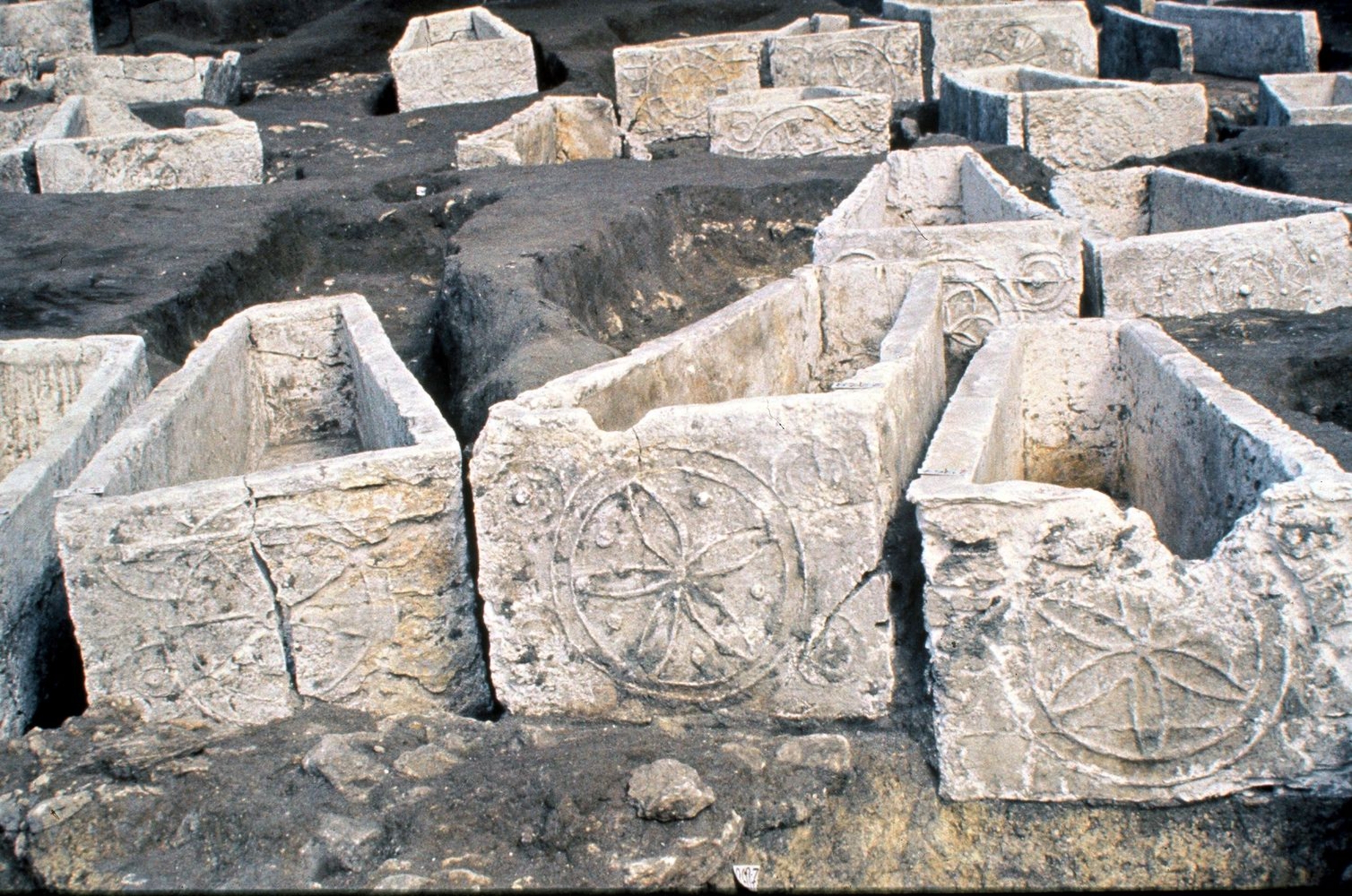- Home
- The town and the abbey
- The site from its origins
- Early history
Reconstructed view of the monumental complex: early sixth century © Ministère de la culture / M. Wyss ; A.-B. Pimpaud ; M.-O. Agnes.
The question of the vicus Catulacensis
From the mid-fourth century, the site of the basilica was continuously occupied. Excavations have revealed the presence of several buildings made of stone. A perimeter ditch contained scraps from a workshop that made bone hairpins. This set of remains suggests a small rural settlement. Could this be the vicus Catulacensis, the domain of the one called Catullus, the oldest known patronymic for Saint-Denis ?
The beginnings of a Christian cemetery
Archaeology has also confirmed the foundation of a contemporary necropolis. In this cemetery the dead were laid in wooden coffins or stone sarcophagi, several of which had covers that consisted of curved copings from Roman walls.
It was in this necropolis that Denis, the first bishop of Paris, would have been buried around the year 250. In the archaeological crypt of the present day basilica, a large pit is considered to be the location of his tomb. Above this site, and dependent on the tomb's orientation, the first basilica was constructed between 460 and 480 at the latest. The foundation of the structure, nine meters wide and more than twenty meters long, reused sculpted blocks taken from a Gallo-Roman mausoleum in the vicinity of Saint-Denis.
This martyr's tomb gave rise to a pilgrimage. To protect it from the influx of the faithful, an enclosure, or chancel was constructed, of which a single polychrome pillar remains.
Among the oldest expressions of the Christian faith at Saint-Denis, one should also mention the terracotta antefixes roof ornaments representing a human face topped by a cross.
The arrival of the Franks
Starting in the late fifth century, the aristocratic Franks chose Saint-Denis as a favored burial place, creating a necropolis beneath the first basilica. The dead-primarily women-were buried in stone sarcophagi. They were dressed in sumptuous outfits adorned with gold braiding, and wore gold and silver jewelry set with precious stones, such as garnets from the mines of India and Sri Lanka.

